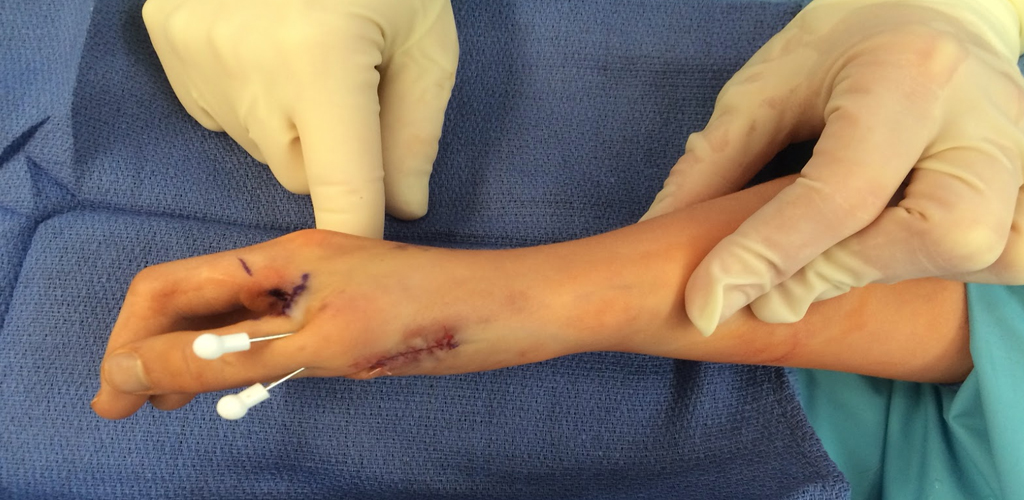Shortened forearm on the ulnar side.
.png)

Ulnar Longitudinal Deficiency is a congenital condition characterized by underdevelopment or absence of the ulna bone in the forearm. This condition can affect hand function and overall upper limb structure, leading to specific challenges that may vary in severity.
Individuals with Ulnar Longitudinal Deficiency may experience a range of symptoms, including:
Shortened forearm on the ulnar side.
Reduced range of motion in the affected arm and hand.
Hand deviation towards the radial side.
Abnormalities in finger alignment and function.
Difficulty grasping objects.
Ulnar Longitudinal Deficiency is primarily a congenital condition, meaning it is present at birth. While the exact cause is often unknown, it may be associated with disruptions in fetal development during the early stages of pregnancy.
Diagnosing Ulnar Longitudinal Deficiency involves a thorough evaluation, including:
A detailed examination of the affected arm and hand to assess structure and function.
X-rays or other imaging techniques to visualize the bones and structures in the affected area.
In some cases, genetic testing may be recommended to identify underlying causes.
Our approach to Ulnar Longitudinal Deficiency may include a combination of the following treatment options:
Customized orthopedic solutions, including bracing and splinting, to support hand positioning and overall upper limb function.
In some cases, surgical procedures such as ulnar reconstruction may be considered to improve overall limb alignment and function.
Rehabilitative therapies, including physical and occupational therapy, to enhance range of motion, strength, and functionality.
Management of pain and discomfort associated with the condition through medications or therapeutic interventions.
If you or your child is affected by Ulnar Longitudinal Deficiency, our specialized team is ready to provide personalized care. Schedule a consultation to discuss tailored solutions that address the unique needs of Ulnar Longitudinal Deficiency and improve overall upper limb function.